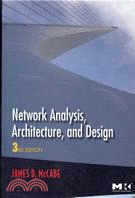Traditionally, networking has had little or no basis in analysis or architectural development, with designers relying on technologies they are most familiar with or being influenced by vendors or consultants. However, the landscape of networking has changed so that network services have now become one of the most important factors to the success of many third generation networks. It has become an important feature of the designer’s job to define the problems that exist in his network, choose and analyze several optimization parameters during the analysis process, and then prioritize and evaluate these parameters in the architecture and design of the system.
Network Analysis, Architecture, and Design, Third Edition, uses a systems methodology approach to teaching these concepts, which views the network (and the environment it impacts) as part of the larger system, looking at interactions and dependencies between the network and its users, applications, and devices. This approach matches the new business climate where customers drive the development of new services and the book discusses how networks can be architected and designed to provide many different types of services to customers. With a number of examples, analogies, instructor tips, and exercises, this book works through the processes of analysis, architecture, and design step by step, giving designers a solid resource for making good design decisions.
With examples, guidelines, and general principles McCabe illuminates how a network begins as a concept, is built with addressing protocol, routing, and management, and harmonizes with the interconnected technology around it. Other topics covered in the book are learning to recognize problems in initial design, analyzing optimization parameters, and then prioritizing these parameters and incorporating them into the architecture and design of the system. This is an essential book for any professional that will be designing or working with a network on a routine basis.
- Substantially updated design content includes ad hoc networks, GMPLS, IPv6, and mobile networking
- Written by an expert in the field that has designed several large-scale networks for government agencies, universities, and corporations
- Incorporates real-life ideas and experiences of many expert designers along with case studies and end-of-chapter exercises












